We aspire to make Judaism relevant, meaningful, joyful, and spiritual with song, poetry, and more.
Prayer at CBI is joyful, uplifting, spiritual, song-filled, intimate, lively, innovative, and authentic. People who are familiar with Reform Judaism will recognize the warmth and joyfulness of our participatory services. Those familiar with more traditional styles will feel at home with our respect for the beauty of the Hebrew language and the ancient structure of Jewish worship.
Our spiritual tools include traditional liturgy, contemporary poetry, chant, and song, as well as the spectacular views from our sanctuary, which connect us with the natural world and with our Source. And when we’re on Zoom, the photographs and art in our custom slideshare siddur uplift and inspire.
Services at CBI are a learning experience, an opportunity to engage more deeply with our liturgy and with our own hearts and souls. (The Hebrew l’hitpallel, “to pray,” also connotes looking inward.) We recognize that our community includes differing levels of knowledge and experience of Jewish prayer. We want everyone to be able to participate.
Prayer at CBI is designed to touch body, heart, mind, and spirit and to connect us with something greater than ourselves. Featuring song, silence, prayer, poetry, learning, and heart-to-heart connection, Shabbat at CBI is the perfect antidote to the pressures of a busy week. We invite you to come and add your voice to ours.
Shabbat
We offer Shabbat (Sabbath) services every week. Once a month we hold Kabbalat Shabbat services on Friday night. Kabbalat Shabbat means welcoming or receiving Shabbat, and is a song-filled evening service with prayers and melodies designed to help us let go of the week, rejoice together, and receive that “extra soul” of Shabbat.
The other weekends of the month we hold Shabbat morning services on Saturday mornings. Shabbat morning services are a bit slower-paced, though they also feature songs, psalms, and prayers. Morning services also include a reading from Torah, our tradition’s core wisdom text, and a d’varling or mini-sermon from the rabbi.
Sometimes we hold special Shabbat services, such as a Poetry Service during April (National Poetry Month), a Rumi service (accompanying our prayers with the mystical poetry of Rumi), or a contemplative chant-based service that strips the liturgy down to single lines that we can sing over and over and enter more deeply.
High Holidays (The Days of Awe)
Our services are open to all.
We do not require a donation for tickets or a synagogue membership in order to join us. We feel strongly that no one should have to “pay to pray.”*
There are no upcoming events at this time
The Days of Awe are celebrated at CBI with song, prayer, and contemplation. As always, the voices of children are welcome in our sanctuary – and we also hold some dedicated childrens’ services, outdoors if weather permits.
Selichot (Saturday night before Rosh Hashanah)
The Days of Awe begin with Selichot on the Saturday night before Rosh Hashanah. We make havdalah to open the doorway to the season, and then the first familiar melodies of the high holidays begin to stir our souls. During our service of poetry, prayer, and song, there is a contemplative opportunity to write down where we’ve “missed the mark.”
Cemetery service (Sunday before Rosh Hashanah)
On the Sunday before Rosh Hashanah, we convene at CBI’s beautiful cemetery in the hills of Clarksburg. We pray a short afternoon service and then take time to place pebbles on the graves of our dead. This opportunity to reflect on our mortality and on the traditions that connect us can be meaningful even for those of us whose family may be buried far away.
Rosh Hashanah Evening
On Erev Rosh Hashanah, we follow the Sefardic custom of a Rosh Hashanah seder, incorporating symbolic foods into our evening service that launches us into the Days of Awe.
Rosh Hashanah Days
We celebrate two days of Rosh Hashanah. Rabbi Rachel serves as kolbo (rabbi and cantor), leading us in traditional high holiday nusach (the melodies of the season) as well as other familiar tunes. We use a custom machzor (high holiday prayerbook) that interweaves traditional materials with contemporary poetry and artwork, designed for screen-sharing so we can offer a meaningful and accessible spiritual journey both to those on-site and to those online.
On the second morning of Rosh Hashanah, our services are more contemplative and informal.
Rosh Hashanah Afternoon – Tashlich
After the first morning of Rosh Hashanah, we convene at a nearby suspension bridge for the ritual of tashlich, symbolically casting away what we need to let go. The gently swaying bridge, the trees in their autumnal finery, and the rushing waters make this ritual sweet and serene.
Shabbat Shuvah (Saturday between Rosh Hashanah and Yom Kippur)
The Shabbat between Rosh Hashanah and Yom Kippur is called Shabbat Shuvah, “The Shabbat of Return.” This service is contemplative, concentrating each prayer into a single line that we can chant many times. Words and melodies soak into us as we open to change.
Kol Nidre (Yom Kippur Evening)
Before Kol Nidre begins, there is music in our sanctuary to soften the heart: some years a cellist; most recently, piano music offered by one of our members. Before sundown, we hear the stirring words and melody of Kol Nidre, the prayer from which this service takes its name. Many of us choose to wear white on Yom Kippur, symbolizing holiness and new beginnings. We awaken our bodies by knocking on the heart as we sing selichot prayers, imploring it to open.
Yom Kippur Morning
The journey of Yom Kippur continues with morning services with song, prayer and poetry, Torah readings, and a creative reweaving of the haftarah from Isaiah that is traditional on this day. We sing the prayers of selichot again and notice how they may feel different this morning.
After morning services, some of us write kvitlach, little notes to God expressing whatever we need to say; we crumple them into tiny balls and tuck them into the crevices of our mini-Kotel (western wall) beside the labyrinth.
Yom Kippur Afternoon Mincha
The afternoon Torah reading culminates in the verse at the literal heart of Torah: the mitzvah of loving our neighbor, our “other,” as ourselves. Then we dive into the book of Jonah, which we experience anew each year with its lessons about repentance and return. Some years we do a Jonah play, or slide show, or text study and discussion. As the angle of the sun changes and the end of the day approaches, energy shifts within us. Some of us walk the meditation labyrinth.
Ne’ilah (Yom Kippur Closing Service)
The closing service of Yom Kippur is intense and special. We sing the prayers of the selichot service for one final time this year. We stand in body or spirit before the open ark. There is an opportunity to whisper whatever we most need to say to God into the open ark while Rabbi Rachel plays music of the season on her guitar. By the time we reach the final tekiah gedolah, we feel wrung-out and exhilarated, purified and ready to begin anew.
Break-the-Fast
We hold a communal break-fast after Ne’ilah – an opportunity to dine and socialize and connect with each other.
Sukkot
Four days after Yom Kippur comes Sukkot, our harvest festival and celebration of impermanence. Our synagogue sukkah is roofed with local corn stalks, surrounded by the glory of our wetlands and hills. Usually we have at least one congregational gathering in the sukkah. Meanwhile, all are welcome to drop in all week long: bring meals, read a book, gaze at the moon through the corn stalks, even bring a sleeping bag and camp out overnight!
Shemini Atzeret / Simchat Torah
We celebrate Shemini Atzeret (“The Pause of the Eighth Day”) with a contemplative morning service that includes the Yizkor memorial prayers recited four times each year. On this day, we linger a little longer with beloved words and melodies – and with each other.
We look forward to celebrating Simchat Torah with the beauty of a fully unrolled Torah scroll and special Torah blessings for each participant.
*For Rosh Hashanah and Yom Kippur, we do not require membership or a donation. However, we ask people to register in advance for security and capacity reasons.
Holidays
Jewish holidays don’t come out of nowhere. Each one leads to the next, so the whole year offers an opportunity to connect with each other and with our Source, and to reflect on who we are and where we’re going.
- At Rosh Hashanah, we gather for services, Torah stories and sermons, and tashlich (casting bread upon the waters — a symbolic discarding of our mistakes from the past year) at the beautiful suspension bridge at TOURISTS across the street. (We do not require a membership or donation to attend Rosh Hashanah services. We do ask that you register in advance for security reasons.)
- At Yom Kippur, many of us wear white to symbolize our souls’ inherent holiness. We hear the stirring notes of Kol Nidre, we sing and pray, we walk the Al and Frances Small Memorial labyrinth. By the end of the closing service, after 25 hours of prayer and song, we feel reborn. (We do not require a membership or donation to attend Yom Kippur services. We do ask that you register in advance for security reasons.)
- At Sukkot, we build a sukkah behind the sanctuary, and — as commanded — we rejoice in it! The sukkah is open to our community all week, and we have lulav and etrog available. Listen to cornstalks rustle overhead and bask in the sweetness of the autumnal full moon.
- At Simchat Torah, we dance with the Torah, read its end and its beginning, and celebrate how its stories and ours interweave.
- At Chanukah, we cherish the gleam of our chanukiyot and celebrate light in winter’s darkness. Some years we hold a havdalah bonfire on our patio, surrounded by the wetlands and the mountains, and sing Chanukah songs together.
- At Tu BiShvat, we hold a special seder for the New Year of the Trees, featuring poems and readings and delicious tree fruits, symbolizing our journey through the seasons and from body and heart to mind and soul.
- At Purim, we hold a Purimspiel — a merry Purim play — in which our community members retell the story of brave queen Esther and how she saved the Jewish people from the villainous Haman. Sometimes there are puppets! Always there are noisemakers.
- At Pesach, we host a second-night community seder. We use a specially abridged and adapted version of The Velveteen Rabbi’s Haggadah for Pesach, written by our own Rabbi Rachel Barenblat, as we retell our people’s core story of liberation.
- At Shavuot, we stay up late and study Torah in many forms, often with sweet dairy treats.
- At Tisha b’Av, we upend our sanctuary for holy purpose, we hear Lamentations and read poetry (both ancient and modern) that opens up the themes of this difficult day…and come afternoon, we rejoice in the teaching that on this darkest of days, transformation is born.
And before Rosh Hashanah we gather for Selichot, the havdalah service of prayers and poems and songs that officially ushers in the High Holiday season, readying ourselves to begin the whole journey all over again!



